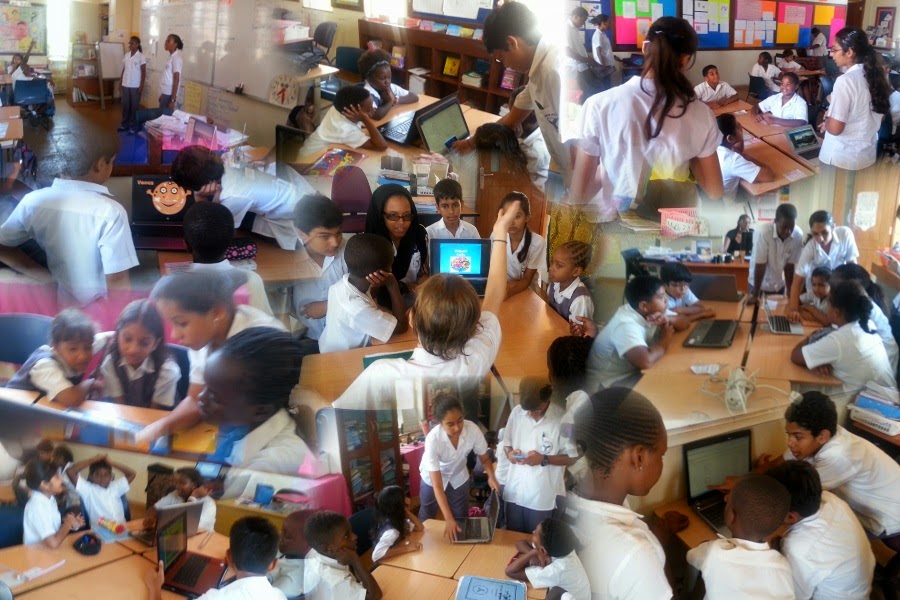Lesson in Progress

MYPCT Y7 CLASS
Saturday, February 26, 2011
Criterion F: attitudes in technology
This criterion refers to students’ attitudes when working in technology. It focuses on an overall assessment of two aspects:
• personal engagement (motivation, independence, general positive attitude)
• attitudes towards safety, cooperation and respect for others.
By their very nature these qualities are difficult to quantify and assess, and assessment should therefore take into account the context in which the unit of work was undertaken.
Achievement level Descriptor
0 The student does not reach a standard described by any of the descriptors given below.
1-2 The student occasionally displays a satisfactory standard in one of theaspects listed above.
3-4 The student frequently displays a satisfactory standard in both of the aspects listed above.
5-6 The student consistently displays a satisfactory standard in both of the aspects listed above.
Evaluate
EVALUATE
Students are expected to evaluate the product/solution against the design specification in an objective manner based on testing, and to evaluate its impact on life, society and/or the environment. They are expected to explain how the product/solution could be improved as a result of these evaluations.
Achievement level Descriptor
0 The student does not reach a standard described by any of the descriptors given below.
1-2 The student evaluates the product/solution or her own performance.
The student makes some attempt to test the product/solution
3-4 The student evaluates the product/solution and his or her own performance and suggests ways in which these could be improved. The student tests the product/solution to evaluate it against the design specification
5-6 The student evaluates the success of the product/solution in an objective manner based on the results of testing and the views of the intended users The student provides an evaluation of his or her own performance at each stage of the design cycle arid suggests improvements Tie student provides an appropriate evaluation of the impact of the product/solution on life, society and/or the environment.
Product testing: A stage in tie design process where versions of products (for example, prototypes) are tested against the need. applied to the context and presented to the end-user or target audience.
Students are expected to evaluate their own performance at each stage of the design cycle and to suggest ways in which their performance could be improved.
Students are expected to evaluate the product/solution against the design specification in an objective manner based on testing, and to evaluate its impact on life, society and/or the environment. They are expected to explain how the product/solution could be improved as a result of these evaluations.
Achievement level Descriptor
0 The student does not reach a standard described by any of the descriptors given below.
1-2 The student evaluates the product/solution or her own performance.
The student makes some attempt to test the product/solution
3-4 The student evaluates the product/solution and his or her own performance and suggests ways in which these could be improved. The student tests the product/solution to evaluate it against the design specification
5-6 The student evaluates the success of the product/solution in an objective manner based on the results of testing and the views of the intended users The student provides an evaluation of his or her own performance at each stage of the design cycle arid suggests improvements Tie student provides an appropriate evaluation of the impact of the product/solution on life, society and/or the environment.
Product testing: A stage in tie design process where versions of products (for example, prototypes) are tested against the need. applied to the context and presented to the end-user or target audience.
Students are expected to evaluate their own performance at each stage of the design cycle and to suggest ways in which their performance could be improved.
Thursday, February 17, 2011
CREATE
CREATE
The student will follow the plan developed to come up with the design specification. The student will maintain a process journal to capture the steps in the Create.
A write up is expected to capture the create experience.
Rubric
CREATE
The student has demonstrated a thorough competence in choice of strategy and implementation. He/she has fully justified any modification to the original design specification, and produced original and outstanding work.
Criterion
MAX 6
The student will follow the plan developed to come up with the design specification. The student will maintain a process journal to capture the steps in the Create.
A write up is expected to capture the create experience.
Rubric
CREATE
The student has demonstrated a thorough competence in choice of strategy and implementation. He/she has fully justified any modification to the original design specification, and produced original and outstanding work.
Criterion
MAX 6
Subscribe to:
Comments (Atom)



